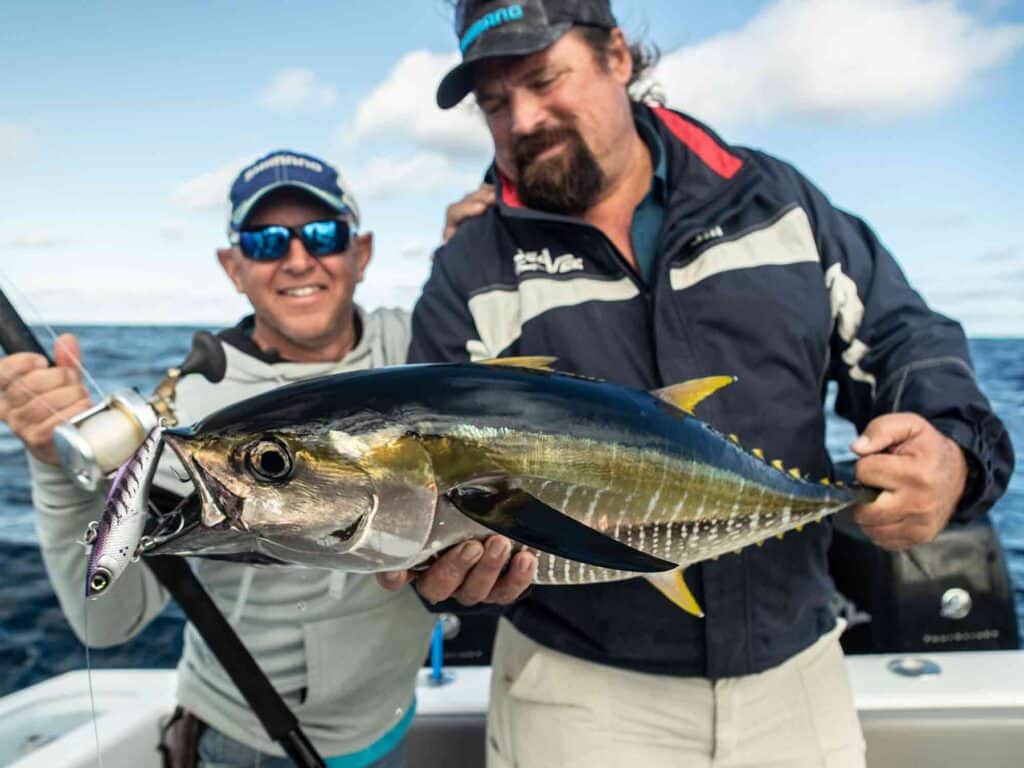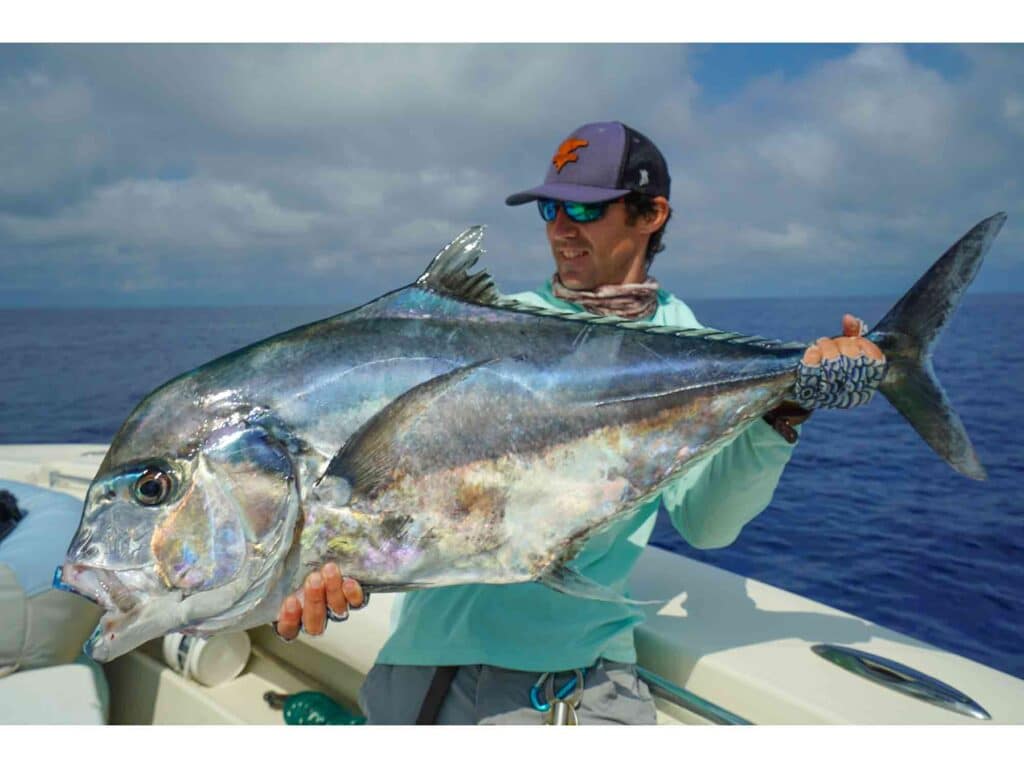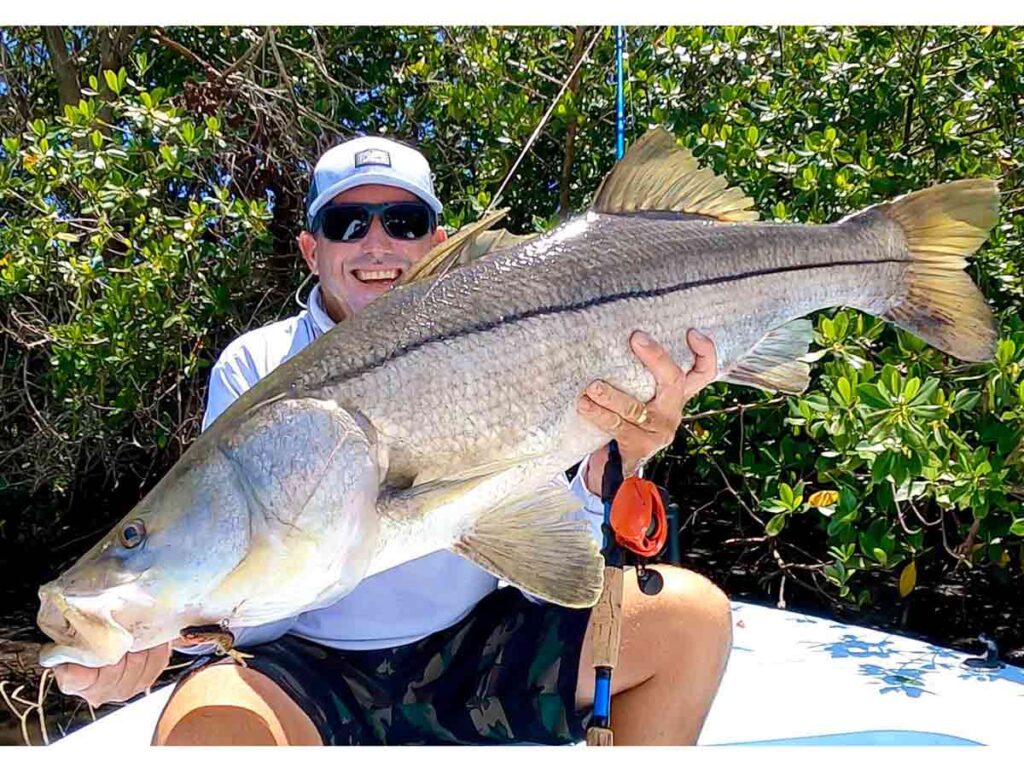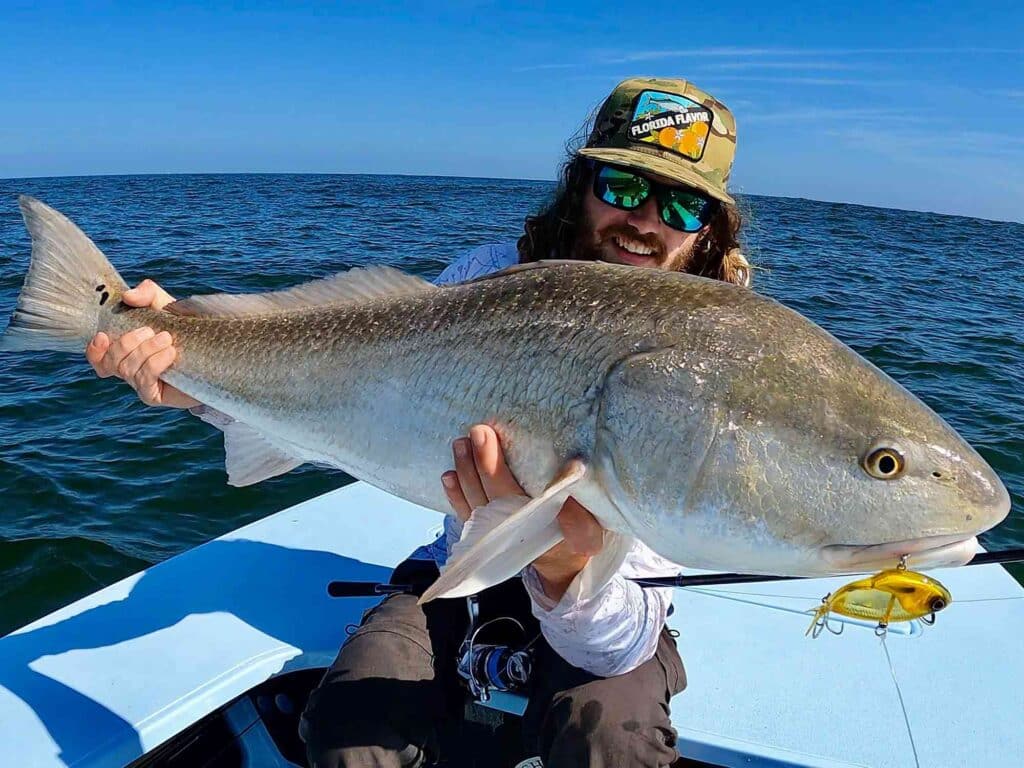
In Australia they call it vibing. To entice finicky fish, anglers work a small lure that vibrates as it falls through the water column and when it’s retrieved. Some anglers might call these lures by different names, as this lure style can be soft baits, hard baits or metal blade baits. Turns out, the tactic is deadly on a wide range of fish, and vibing is catching on around the world.
“Twenty years ago, vibe lures came to Australia from Japan,” explains Jarad “Dingo” Boshammer. Boshammer is a native Australian but now lives and guides in Jupiter, Florida. “In Australia, vibe lures are a household name,” he says.
In 2009, Boshammer moved to America. “I brought some vibe lures with me,” he remembers. When his supply ran out, he convinced his father to send lures from home. “The tactic is just as effective on snook, redfish and a variety of species,” Boshammer says. “People think vibe lures are complicated, but it’s pretty simple.”
Vibe Lures Are a Hit

Vibe lures, or bladed baits, are effective for a variety of inshore and offshore species. Carter Andrews, host of The Obsession of Carter Andrews television show, says, “I do a little bit of everything so I’m always looking for a lure that is multidimensional.”
Andrews uses Yo-Zuri’s High Speed Vibe hard lure for offshore fishing. “I can rip it across the surface, swim it, let it drop, bounce bottom or even troll up to 12 knots,” he says.
Besides Nomad Tackle and Yo-Zuri, other lure makers sell vibe and blade lures too. Berkley has a Shimma Vector Vibe, which is mostly available in Australia. But more and more lure makers are offering baits in the US, such as the Daiwa Bull Steel blade bait or Storm Arashi Vibe.

So, what is vibing? According to Chris Shoplock, marketing coordinator at Nomad Tackle, “A vibe lure looks like a lipless crankbait with a line tie on the top and treble hooks in the front and back.” Saltwater versions are through-wired to hold the lure together. The key feature is an exaggerated wobble when the lure swims and when it falls. “That makes it doubly effective,” Shoplock says.
Offshore Fishing With Vibe Lures

Carter Andrew’s favorite scenario involves boiling tuna. “Everyone is focused on catching tuna on topwater, but I catch three tuna to one on a subsurface lure,” he explains.
When Andrews first approaches tuna feeding on the surface, he makes a long cast with a 7-foot, 7-inch medium-heavy, fast-action Grappler rod and 14000 Shimano Stella reel spooled with 65-pound braid and six feet of 60- to 80-pound fluorocarbon leader.
His initial attack is quickly retrieving the lure across the surface. If the tuna don’t respond, Andrews allows the plug to sink to the depth where he is marking fish. “The lure vibrates slowly when it sinks, then the vibrations increase when I retrieve it,” he details.
King mackerel are another favorite target. “The small vibe lure is a perfect match when king mackerel are feeding on smaller baitfish,” he says. Andrews adds a short length of No. 6 wire when he’s kingfishing.
Andrews says the vibe lure’s versatility saves time and money. “I don’t have to change rods or retie lures because I can go from topwater to the bottom during one cast.” He’s caught everything from tuna to red snapper with vibe lures. “This dog is hunting all the time,” he says.
Inshore and Flats Fishing With Blade Baits

Inshore anglers are also finding new ways to use vibe lures. Jarad Boshammer has been experimenting with Nomad Tackle’s vibe series. “In the first 12 months, I caught 52 species of freshwater and saltwater fish,” he says.
Nomad has developed a line or rods and reels matched to vibe fishing. “The rods have a fast tip to work the lure but remain sensitive to feel the bite,” he says. For smaller vibe lures, he uses a 7-foot-plus rod rated for 10- to 20-pound test. With the larger vibe lures, he bumps up to 30-pound spinning gear.
Boshammer uses a two-phase finesse technique, much like fishing a twitchbait. He starts by casting the lure into the current. Then, he allows it to sink to the bottom. “The lure wobbles when it sinks; I keep the line tight so I can feel a bite,” he says.

When he feels the lure hit the bottom, he starts the retrieve. “Every time I turn the reel handle, I give the rod tip two quick pumps and then pause,” he says. Boshammer holds the rod at a 45-degree angle and keeps the line tight while the lure sinks.
As the lure gets closer to the boat, Boshammer raises and lowers the rod tip to bounce the vibe off the bottom. “I want the lure to contact the bottom between retrieves,” he stresses.
Both experts agree, vibe lures maximize opportunities because the lure is always working. “It is as effective on the drop as the retrieve,” Andrews says. This makes vibe and blade lures excellent search baits for working the surface, mid-water and along the bottom. Boshammer says, “If I was going to take one lure around the world, it would be a vibe.”








